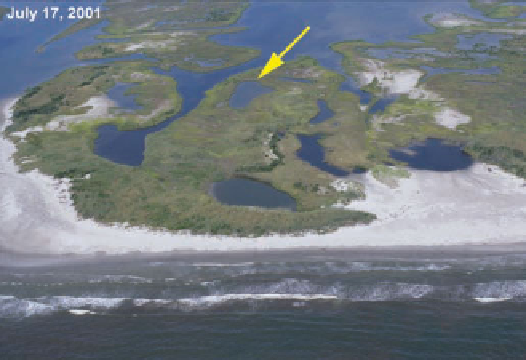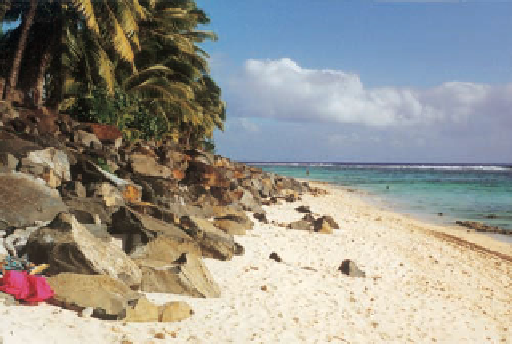Geology Reference
In-Depth Information
31 18 35
18 16 27
◗
Figure 16.21
The Chandeleur Islands Before and After Hurricane Katrina
protect homes from the next spring tide (Figure 16.22b),
only to see the berm disappear and then have to rebuild it
in a never-ending cycle of erosion and expensive artifi cial
replacement.
Because we can do nothing to prevent sea level from
rising, engineers, scientists, planners, and political leaders
must examine what they can do to prevent or minimize
the effects of shoreline erosion. At present, only a few vi-
able options exist. One is to put strict controls on coastal
development. North Carolina, for example, permits large
structures no closer to the shoreline than 60 times the an-
nual erosion rate. Although a growing awareness of shore-
line processes has resulted in similar legislation elsewhere,
some states have virtually no restrictions on coastal
development.
Regulating coastal development is commendable, but it
has no impact on existing structures and coastal communi-
ties. A general retreat from the shoreline may be possible, but
expensive, for individual dwellings and small communities,
but it is impractical for large population centers. Such com-
munities as Atlantic City, New Jersey, Miami Beach, Florida,
and Galveston, Texas, have adopted one of two strategies
to combat coastal erosion. One is to build protective barri-
ers such as seawalls. Seawalls, such as the one at Galveston,
Texas, are effective, but they are tremendously expensive to
construct and maintain. More than $50 million was spent in
◗
Figure 16.22
Riprap and Sand Berm
b
Heavy equipment builds a berm, an embankment of sand, on the
seaward side of beach homes on the Isle of Palms, South Carolina,
to protect them from waves. The berm must be rebuilt every two
weeks after each spring tide.
a
Riprap made up of large pieces of basalt was piled on this
beach to protect a luxury hotel just to the left of this image.





Search WWH ::

Custom Search